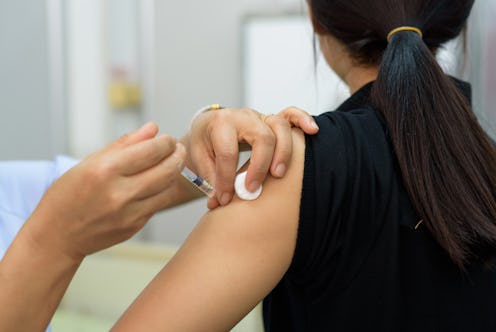Wellness
Cervical Cancer Could Be Wiped Out In High Income Countries Due To The HPV Vaccine

According to a new report, the HPV vaccine could "eliminate cervical cancer" in high-income countries within decades, as the Guardian reports. Published in medical journal The Lancet, the meta-analysis incorporated data from 14 high-income countries and 60 million people. The study found that infections of human papillomavirus strands 16 and 18, the most common causes of cervical cancer, have declined by 83 percent in girls aged between 13 and 19, as a result of vaccination over the past five to eight years. Among women between the ages of 20 and 24, infections of HPV 16 and 18 have declined by 66 percent. Note: while the meta-analysis and the academics quoted refer to women and girls, anybody with a cervix can develop cervical cancer, including trans men and boys and some non-binary people.
Diagnoses of anogenital warts, also caused by HPV, have also declined across the high-income countries studied. Among girls aged 15 to 19, diagnoses decreased by 67 percent; among women aged 20 to 24, by 54 percent; and among women aged 25 to 29, by 31 percent. Diagnoses of genital warts also declined among boys and men. In the 15 to 19 age group, there was a 48 percent decrease, while in men aged 20 to 24, diagnoses declined by 32 percent.
Professor Marc Brisson from Laval University in Quebec, Canada, told the Guardian, “We’re working with the WHO, using mathematical modelling to determine when elimination would occur," explaining, "We don’t have a precise date. High vaccine coverage has to be maintained. It depends on the country and how much coverage and screening there is, and how many cohorts have been vaccinated."
In Australia, Brisson said, "There could be elimination in decades."
Dr. David Mesher of Public Health England told the Guardian that it was too early to demonstrate a decline in cervical cancer diagnoses, because of the time the disease takes to develop. (Routine vaccination of people assigned female at birth aged 12 and 13 was only established in the UK in 2008.) However, Mesher said, "There is every indication we will see it in the near future. We will start relatively soon to see an impact in younger women."
The Laval University meta-analysis did not look at lower-income countries, where most people die from cervical cancer. According to the World Health Organization, "Nearly 90 percent of deaths from cervical cancer each year are of women living in low- and middle- income countries."
"Most of these women will not have had access to the key cervical cancer services which could have saved their lives, nor the palliative care to help them manage pain and safeguard their quality of life," the WHO added.
Brisson told the Guardian, "What we see is that in many low- to middle-income countries, there is no vaccine at all," adding, "These are the countries with the highest burden of cervical cancer. The results show that the vaccines are working towards preventing cervical cancer, so I hope that we will be able in coming years to increase vaccination coverage in many of the countries that need it most."
The World Health Organization has launched a programme for the total elimination of cervical cancer. "For too long, too many of the poorest and most vulnerable women have suffered from this highly preventable form of cancer," the organisation said. "This call to action is appealing for a global effort to accelerate national action towards elimination of cervical cancer. This is to make cancer a story of the past and to safeguard the human rights of all women everywhere to good health and well-being, no matter where they live."